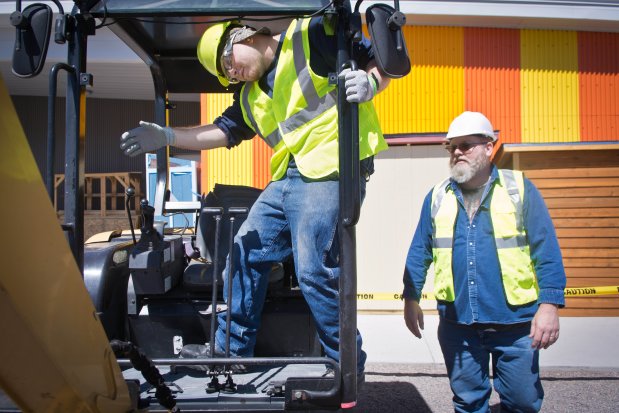The Job Corps Failure
Taxpayers spend billions on a training program that doesn’t deliver.

The U.S. economy is desperately short of skilled workers, and the federal government claims it wants to help. Alas, a new report from the Labor Department’s inspector general shows that the $1.7 billion federal Job Corps training program is a flop.
Launched in 1964, Job Corps works with 16- to 24-year-olds who grew up homeless or poor, passed through foster care, or suffered other hardships. The goal is to equip these young adults with skills for careers in advanced manufacturing, the building trades, health care, information technology, business and more.
Nearly 50,000 people enrolled in 2017, and 87% lived in Job Corps dorms. In addition to training and housing, the Job Corps provides meals, medical care, books, clothing and supplies, as well as an allowance for child care and living expenses. Such comprehensive support doesn’t come cheap—the taxpayer cost per student last year was $33,990—and the IG suggests that the investment often doesn’t pay off.
Potomac Watch Podcast
Job Corps’ record-keeping is a hot mess, but in 27 of 50 cases where full employment data existed, graduates were working the same sort of low-wage, low-skill jobs they held before training. One participant completed 347 days of Job Corps carpentry training but five years later worked as a convenience-store clerk for $11,000 a year. Job Corps called this as a successful outcome, so what do failures look like?
In 2011 the IG found the program matched more than 1,500 students with “jobs that required little or no previous work-related skills, knowledge, or experience, such as fast food cooks and dishwashers that potentially could have been obtained without Job Corps training.” The audit also found Job Corps had placed nearly one in five graduates in jobs that “did not relate or poorly related to the students’ training.”
The new report suggests that Job Corps’ biggest beneficiaries may be government contractors, not rookie job seekers. Job Corps spent more than $100 million between 2010 and 2011 on transition-service specialists to place students in a job after training.
But among 324 sampled Job Corps alumni, the IG found evidence that contractors had helped a mere 18 find work. The contractors often claimed credit for success even though they provided no referrals or résumé and interview help. Overall, the IG estimates that Job Corps paid contractors some $70.7 million for transition services they failed to adequately perform.
For a decade the IG has also raised alarms about Job Corps’ dismal safety record. The worst incident happened in 2015 at the now-shuttered Homestead Job Corps Center in Florida. Five students allegedly murdered 17-year-old classmate Jose Amaya Guardado with a machete, hitting him “until the victim’s face caved in,” a detective recounted.
Job Corps can’t be judged on one incident. But Deputy Inspector General Larry Turner told Congress last summer that numerous Job Corps centers had “failed to report 40% of potentially serious criminal misconduct incidents” to the police. Some unreported incidents included “physical assault, weapons possession, narcotics possession or sales, and other events that indicates a student was a danger to himself or others.”
The stronger economy means that businesses are clamoring for workers, and providing workers an opportunity to get the skills to match the openings is crucial. But too many government training programs show poor results, and those shouldn’t have a permanent claim on taxpayer dollars.
Congress and the Trump Administration should take a hard look at the Job Corps and see if it’s worth the money or merely tricking too many young people with false hope.












![[https://m.wsj.net/video/20180423/042018ttcourse4/042018ttcourse4_167x94.jpg]](The%20Job%20Corps%20Failure%20-%20WSJ_files/042018ttcourse4_167x94.jpg)
![[https://m.wsj.net/video/20180423/042318torontovan/042318torontovan_167x94.jpg]](The%20Job%20Corps%20Failure%20-%20WSJ_files/042318torontovan_167x94.jpg)
![[https://m.wsj.net/video/20170912/091217applesf2/091217applesf2_167x94.jpg]](The%20Job%20Corps%20Failure%20-%20WSJ_files/091217applesf2_167x94.jpg)
![[https://m.wsj.net/video/20180419/041918ctrade2025/041918ctrade2025_167x94.jpg]](The%20Job%20Corps%20Failure%20-%20WSJ_files/041918ctrade2025_167x94.jpg)
![[https://m.wsj.net/video/20180418/041818syrchem1/041818syrchem1_167x94.jpg]](The%20Job%20Corps%20Failure%20-%20WSJ_files/041818syrchem1_167x94.jpg)














